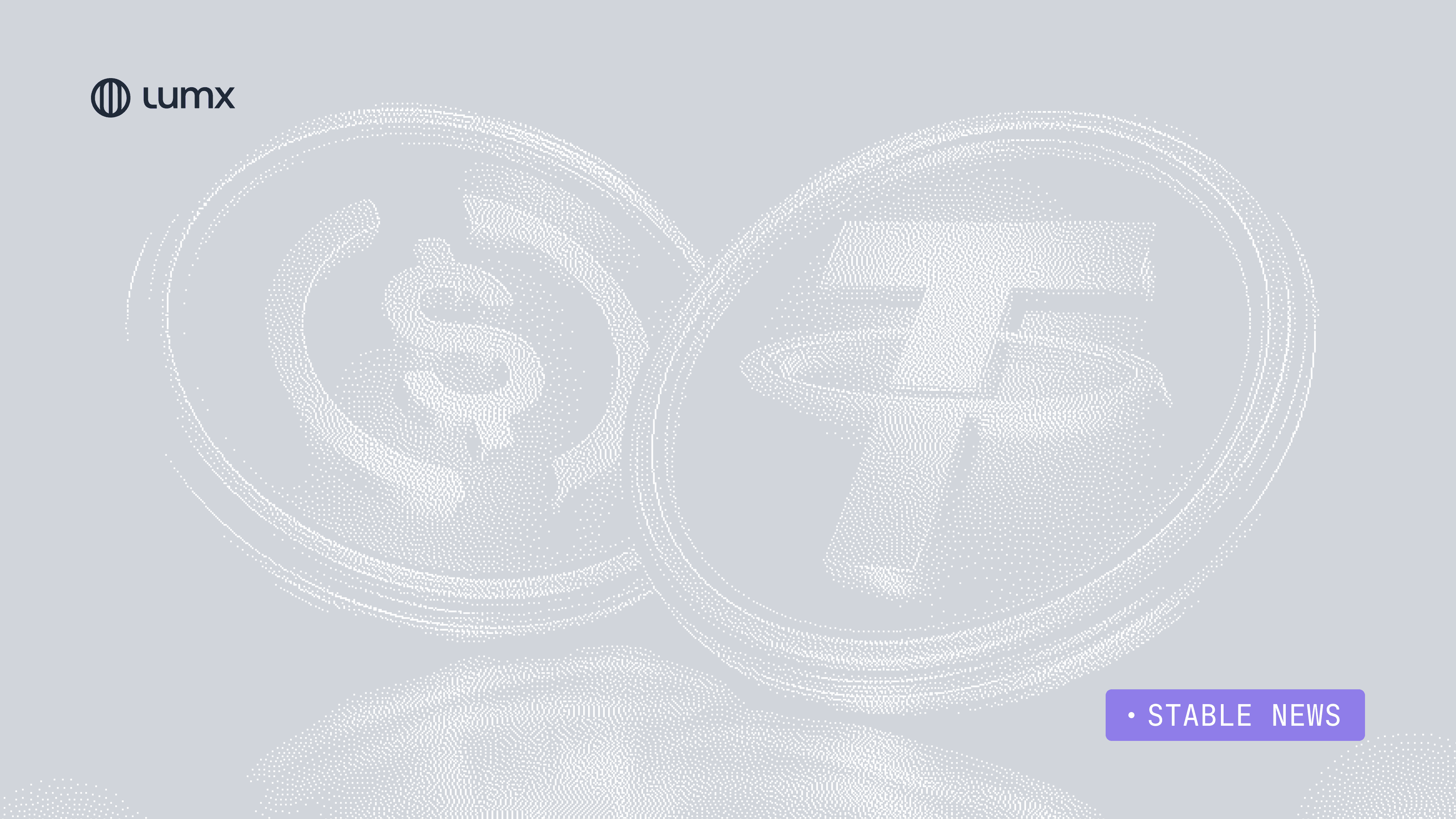Stable News is Lumx’s weekly curation of the most important developments surrounding stablecoins and their impact on the global financial system. In this edition, we track how banks, remittance companies, regulators, and institutional platforms are not only adopting stablecoins but actively shaping the rules and layers of integration that define them. From the U.S. to Brazil, the real race is about who lays down the tracks for digital settlement.
Reading time: 5 minutes
Trump Signs First Federal Stablecoin Law: GENIUS Act Redefines the Playing Field
The U.S. Congress has passed, and President Donald Trump has signed, the GENIUS Act, the first federal law in the country dedicated exclusively to stablecoins. The legislation requires 100% liquid reserves, monthly transparency reports, and new governance rules for issuers. It also bans unbacked algorithmic stablecoins.
The law marks a pivotal shift in the U.S. market, providing institutional clarity for issuers like Circle and creating a regulatory framework that could attract banks, fintechs, and large corporations. The bill also signals a political turning point, with bipartisan support and direct interest from President Trump, who aims to position the U.S. as a global hub for digital assets.
Why it matters:
✅ Establishes baseline standards for transparency, backing, and legal structure for stablecoin issuers
✅ Reinforces the U.S. dollar as the foundation of the digital economy, boosting demand for U.S. Treasuries
✅ Opens the door for institutional adoption of stablecoins by banks and tech firms
Western Union Prepares Stablecoin Integration, Eyes Crypto Partnerships
Western Union has announced plans to integrate stablecoins into its international payment infrastructure. In an interview with Bloomberg, CEO Devin McGranahan outlined three focus areas: cross-border settlement with stablecoins, fiat-crypto conversions, and using stablecoins as a store of value in volatile economies.
The announcement follows the passage of the GENIUS Act and illustrates how legacy players are responding to new regulatory clarity. Western Union previously tested partnerships with Ripple, but this move signals a strategic leap toward practical adoption of stablecoins at scale.
Why it matters:
✅ Remittance companies are repositioning themselves as digital infrastructure providers in a disrupted market
✅ U.S. regulatory clarity lowers the legal barriers for traditional institutions to adopt stablecoins
✅ Reinforces stablecoins as a pragmatic tool in high-inflation and currency-volatile regions
BitGo Files for IPO, Marking Institutional Maturity in Crypto Custody
BitGo, one of the largest digital asset custodians, has confidentially filed for an IPO with the SEC. Managing over $100 billion in assets, BitGo focuses on custody, settlement, and infrastructure for institutional clients.
Its decision to go public follows moves by other industry players like Circle and eToro, signaling growing maturity in the sector. BitGo has also secured a MiCA license in Europe and actively participates in U.S. regulatory discussions, positioning itself as a bridge between traditional finance and digital ecosystems.
Why it matters:
✅ The institutional boom in stablecoins is driving demand for secure, regulated infrastructure
✅ BitGo’s IPO supports the narrative of maturity and transparency in the digital asset industry
✅ Custodians are emerging as critical pillars in the new monetary architecture
Citi Unveils Stablecoin and Tokenized Deposit Strategy
In its latest earnings call, Citi announced plans to issue a proprietary stablecoin in partnership with other banks, along with expanding the use of tokenized deposits for onchain settlement. CEO Jane Fraser outlined four key areas: institutional on/off-ramps, reserve management, tokenization, and participation in banking consortia.
A new Citi whitepaper also revealed that 65% of market participants plan to use stablecoins, tokenized deposits, or other digital settlement systems by 2026, surpassing expectations for CBDC usage for the first time.
Why it matters:
✅ Banks are building their own digital rails, closed, interoperable, and regulated
✅ Tokenized deposits are solidifying as a viable, real-time alternative to traditional settlement
✅ Regulatory clarity is accelerating institutional interest in onchain treasury and secondary market solutions
New ABToken Report Highlights Organic Growth of Brazil’s Stablecoin Market
A recent study by ABToken shows that 76% of stablecoin transactions in Brazil occur peer-to-peer, outside of exchanges. The report also reveals that over 9 million Brazilians used stablecoins in the past year, with Tether (USDT) accounting for 83% of the volume.
Despite the dominance of international issuers, Brazil’s ecosystem already includes notable local initiatives. The report warns of risks related to technological dependence and urges the development of an industrial policy that treats stablecoins as strategic financial infrastructure.
Why it matters:
✅ Stablecoins in Brazil are being used beyond speculation, for payments, remittances, and value preservation
✅ The absence of local issuers limits value capture, interoperability, and regulatory alignment
✅ Now is a key moment to explore public-private models for stablecoins interoperable with the national financial system
From Washington to São Paulo, and across global financial institutions, this edition shows a clear trend: stablecoins are no longer a speculative idea, they’re becoming foundational infrastructure for the digital economy.
The conversation is no longer just about issuing them, but about governance, interoperability, and integration into real financial flows.
Understanding who’s building, regulating, and using these new monetary layers is essential to understanding where the global financial system is headed.
See you in the next edition. Have a great week!








